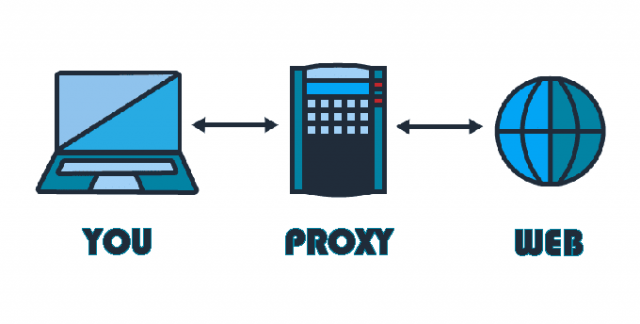Augmented reality (AR) is a unique tech marvel whose adoption keeps spreading across industries worldwide at an incredible pace. It continuously mesmerizes people along the way due to its versatility and remarkable possibilities. With the ability to merge virtual and physical realms, AR holds the potential to dramatically shake up sectors like entertainment, gaming, healthcare, education, and even beyond.
One of the core advantages of AR lies in how it significantly improves our interaction with the world around us by skillfully blending digital elements into our surroundings. Through this approach, it makes identifying opportunities for growth effortless by generating a variety of unique experiences tailored to unique needs. This article thoroughly examines augmented reality: what it is about, its numerous applications across diverse industries, and how it supports improvement for a better future.
Understanding Augmented Reality
The success behind AR lies in its usage of cutting-edge computer vision algorithms alongside sensors. Such tools facilitate highly accurate mapping while conducting live tracking of our physical environment.
By analyzing contextual information from our surroundings, AR systems identify, in real time, where a user’s device is and its position in relation to the surrounding area. Using this data ensures perfect alignment between virtual objects targeting specific spots physically while blending immersive experiences into our reality. With AR, users can enjoy a seamless experience between the virtual and physical elements they interact with.
AR offers various levels of immersion, ranging from simple informational overlays to more immersive experiences that incorporate interactive elements and realistic virtual objects. Users can view and manipulate virtual objects as if they were physically present, allowing them to explore and interact with digital content naturally and intuitively. Furthermore, AR can also incorporate other sensory inputs, such as audio and haptic feedback, further enhancing the user experience and creating a multi-modal interactive environment.
Applications of Augmented Reality
Considering the features of AR, it’s not surprising that it is upending the way we live. Here are some real-world applications:
- Gaming and Entertainment
AR has revolutionized the gaming industry by bringing virtual elements into our real-world surroundings. Games like Pokémon Go captivated millions of users by allowing them to catch virtual creatures in their neighborhoods.
Additionally, AR has opened up new possibilities in the world of sneaker culture with innovative experiences. Augmented reality, plus a reliable Yeezy proxy and bot, makes the search for elusive footwear straightforward. AR also enables immersive experiences in theme parks, museums, and live events, enhancing the overall entertainment value and providing unique and interactive encounters for attendees.
- Retail and E-commerce
AR is transforming the way we shop by enabling virtual try-ons and product visualizations. Customers can now use AR applications to see how furniture would look in their homes, try on virtual clothes, or even test out cosmetics before making a purchase.
- Education and Training
AR has immense potential in education, providing interactive and immersive learning experiences. Students can explore historical sites, dissect virtual organisms, or visualize complex concepts in a more engaging manner. AR also aids in training scenarios, allowing professionals to practice complex operations in realistic simulated environments.
- Healthcare
Augmented reality is used in healthcare for surgical planning and training purposes. Surgeons can overlay digital information onto the patient’s body, providing guidance during challenging procedures. AR also aids medical education, allowing students to visualize anatomical structures and practice virtual surgeries.
- Industrial and Manufacturing
AR is transforming the way industries operate by providing real-time information and assistance to workers. From assembly line guidance to remote collaboration and maintenance, AR improves efficiency, reduces errors, and enhances worker safety.
Future Possibilities
The potential of AR is vast, and its future looks promising. As technology continues to advance, we can expect AR to become more seamless, immersive, and integrated into our daily lives. Some areas of development and exploration include:
- Wearable AR Devices: Smaller and more powerful AR devices, such as smart glasses, will become increasingly common, allowing users to have hands-free experiences.
- Spatial Mapping and Object Recognition: AR will become more intelligent in understanding and interacting with the physical environment, enabling more realistic and context-aware experiences.
- Augmented Teleconferencing: AR could revolutionize remote communication by overlaying virtual avatars or real-time holograms of participants, making it feel as if they are in the same room as the presenter.
- Autonomous Vehicles: AR can enhance the driving experience by overlaying navigation information, real-time hazard alerts, and contextual information about the surroundings.
Takeaways
Unprecedented possibilities await those who acknowledge how augmented reality bridges physical limitations within an ever-expanding digitized realm. Education, entertainment, healthcare, and general businesses all benefit from this techno-relay between worlds previously thought insurmountable by mortal means.
People fear anything new, such as AI, AR, and VR. But regardless, these advances herald only one thing: fuller, enriched lives for globally acknowledging minds seeking liberty beyond established borders. Let’s embrace these new technologies and welcome the future with open hands.
Follow Techiemag for more!
Table of Contents





![[Jan 2024] EZTV Proxy | Unblock EZTV | EZTV Alternatives eztv](https://www.techiemag.net/wp-content/uploads/2020/05/eztv-300x194.png)
![11 BEST Data Recovery Software in 2020 [pii_email_4349dab0e0760840840a]](https://www.techiemag.net/wp-content/uploads/2020/06/Mobile-App-100x75.jpeg)
![The Top 10 Healthcare M&A Deals of 2022 [pii_email_04b8a82e489233ceac97]](https://www.techiemag.net/wp-content/uploads/2020/08/How-to-Build-a-Healthcare-Website-Thatll-Elevate-Your-Practice-100x75.jpg)
